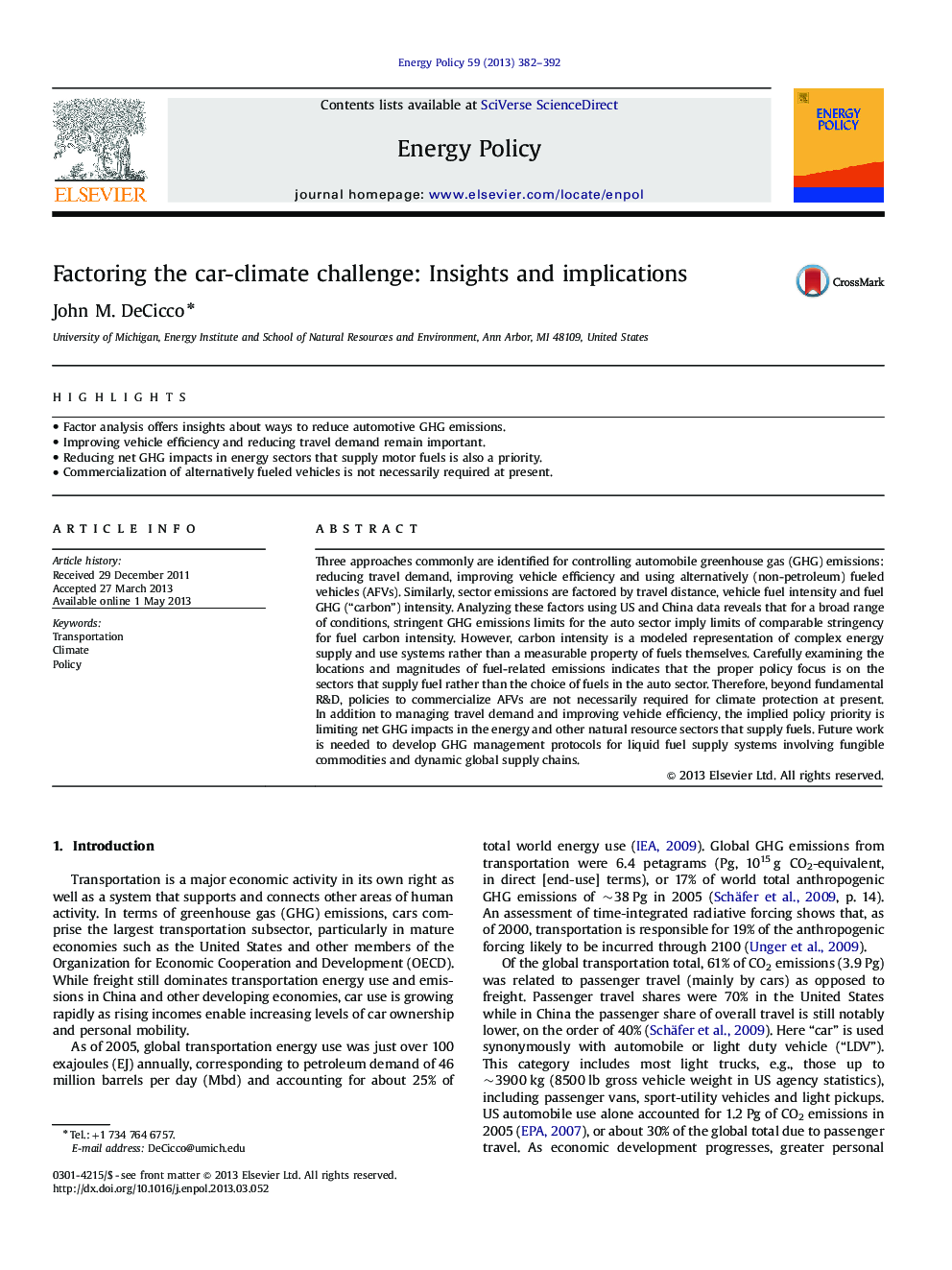| کد مقاله | کد نشریه | سال انتشار | مقاله انگلیسی | نسخه تمام متن |
|---|---|---|---|---|
| 7404438 | 1481299 | 2013 | 11 صفحه PDF | دانلود رایگان |
عنوان انگلیسی مقاله ISI
Factoring the car-climate challenge: Insights and implications
ترجمه فارسی عنوان
فاکتورسازی چالش ماشین-آب و هوا: بینش و مفاهیم
دانلود مقاله + سفارش ترجمه
دانلود مقاله ISI انگلیسی
رایگان برای ایرانیان
کلمات کلیدی
حمل و نقل، آب و هوا، سیاست،
موضوعات مرتبط
مهندسی و علوم پایه
مهندسی انرژی
مهندسی انرژی و فناوری های برق
چکیده انگلیسی
Three approaches commonly are identified for controlling automobile greenhouse gas (GHG) emissions: reducing travel demand, improving vehicle efficiency and using alternatively (non-petroleum) fueled vehicles (AFVs). Similarly, sector emissions are factored by travel distance, vehicle fuel intensity and fuel GHG (“carbon”) intensity. Analyzing these factors using US and China data reveals that for a broad range of conditions, stringent GHG emissions limits for the auto sector imply limits of comparable stringency for fuel carbon intensity. However, carbon intensity is a modeled representation of complex energy supply and use systems rather than a measurable property of fuels themselves. Carefully examining the locations and magnitudes of fuel-related emissions indicates that the proper policy focus is on the sectors that supply fuel rather than the choice of fuels in the auto sector. Therefore, beyond fundamental R&D, policies to commercialize AFVs are not necessarily required for climate protection at present. In addition to managing travel demand and improving vehicle efficiency, the implied policy priority is limiting net GHG impacts in the energy and other natural resource sectors that supply fuels. Future work is needed to develop GHG management protocols for liquid fuel supply systems involving fungible commodities and dynamic global supply chains.
ناشر
Database: Elsevier - ScienceDirect (ساینس دایرکت)
Journal: Energy Policy - Volume 59, August 2013, Pages 382-392
Journal: Energy Policy - Volume 59, August 2013, Pages 382-392
نویسندگان
John M. DeCicco,
